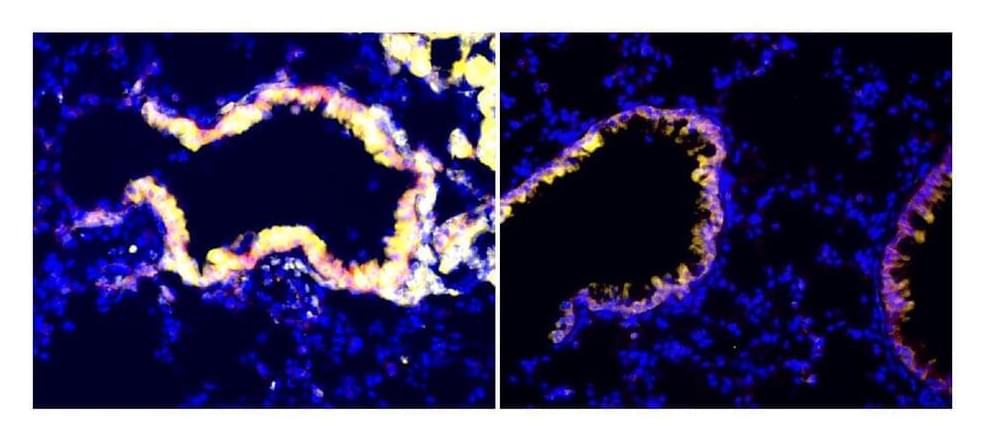Toxic microbial blooms thrived during the Great Dying, the most severe extinction in Earth’s history, and they are proliferating again due to human activity.
Covid: Immune therapy from llamas shows promise.
An immune therapy derived from llama blood shows “exciting potential” in early coronavirus trials.
Past and present nuclear activities (energy, research, weapon tests) have increased the urgency to understand the behavior of radioactive materials in the environment. Nuclear wastes containing actinides (e.g. plutonium, americium, curium, neptunium…) are particularly problematic as they remain radioactive and toxic for thousands of years.
Lawrence Livermore National Laboratory (LLNL) scientists and collaborators proposed a new mechanism by which nuclear waste could spread in the environment.
The new findings, that involve researchers at Penn State and Harvard Medical School, have implications for nuclear waste management and environmental chemistry. The research is published in the Journal of the American Chemical Society.
“This study relates to the fate of nuclear materials in nature, and we stumbled upon a previously unknown mechanism by which certain radioactive elements could spread in the environment,” said LLNL scientist and lead author Gauthier Deblonde. “We show that there are molecules in nature that were not considered before, notably proteins like ‘lanmodulin’ that could have a strong impact on radioelements that are problematic for nuclear waste management, such as americium, curium, etc.”
These club cell-secreted factors are able to nullify immune suppressor cells that otherwise help tumors escape an effective antitumor response,” said co-senior author Dr. Vivek Mittal, director of research at the Neuberger Berman Lung Cancer Center and the Ford-Isom Research Professor of Cardiothoracic Surgery at Weill Cornell Medicine. “We’re excited by the possibility of developing these club cell factors into a cancer treatment.
Malignant tumors can enhance their ability to survive and spread by suppressing antitumor immune cells in their vicinity, but a study led by researchers at Weill Cornell Medicine and NewYork-Presbyterian has uncovered a new way to counter this immunosuppressive effect.
In the study, published Sept. 20 in Nature Cancer, the researchers identified a set of anti-immunosuppressive factors that can be secreted by cells called club cells that line airways in the lungs. They showed in a mouse model of lung cancer that these club cell factors inhibit highly potent immunosuppressive cells called myeloid-derived suppressor cells (MDSCs), which tumors often recruit to help them evade antitumor immune responses.
The inhibition of the MDSCs led to an increase in the number of antitumor T cells at the tumor site, and greatly improved the effectiveness of FDA approved PD1 immunotherapy.
As this is the first report of neuro-inflammation in Kleefstra syndrome, the next step is to find out if it also occurs in the human condition. Shinkai believes the chances are high and says he would not be surprised if other neurological diseases caused by epigenetic dysregulation were also related to abnormal inflammation in the brain.
Researchers at the RIKEN Cluster for Pioneering Research (CPR) in Japan report that Kleefstra syndrome, a genetic disorder that leads to intellectual disability, can be reversed after birth in a mouse model of the disease. Published in the scientific journal iScience, the series of experiments led by Yoichi Shinkai showed that postnatal treatment resulted in improved symptoms, both in the brain and in behavior.
Normally, we get two good copies of most genes, one from each parent. In Kleefstra syndrome, one copy of the EHMT1 gene is mutated or missing. This leads to half the normal amount of GLP, a protein whose job is to control genes related to brain development through a process called H3K9 methylation. Without enough GLP, H3K9 methylation is also reduced, and the connections between neurons in the brain do not develop normally. The result is intellectual disability and autistic-like symptoms. “We still don’t know if Kleefstra syndrome is a curable disease after birth or how this epigenetic dysregulation leads to the neurological disorder,” says Shinkai. “Our studies in mice have provided new information about what causes the behavioral abnormalities associated with the syndrome and have shown that a cure is a real possibility in the future.”
Reasoning that extra GLP might be an effective treatment, the researchers performed a series of experiments in mice that were engineered to have only one good copy of the EHMT1 gene. The brains of these mice show characteristics of the human condition, including 40% less GLP and 30% less H3K9 methylation. The mice also display several behaviors seen in humans with Kleefstra syndrome, such as reduced locomotion and greater anxiety. After each experiment, the researchers measured these factors and compared them to normal mice to see if the treatment had been effective.
Do Microbes Make Us Social?
Posted in biological, evolution, genetics, neuroscience
Microbes may have influenced the evolution of the social brain and behavior as a means to propagate their own genetic material.
—Cryan, Dinan, et al., November 2,019 Science.
In an effort to extend their territory, microbes may push us to socialize.
Scientists at Brookhaven National Laboratory turned light into electrons, validating a theory that dates back nearly a century.
New technique delivers resolution improvement in ultrafast processes.
An international consortium of scientists, initiated by Reinhard Kienberger, Professor of Laser and X-ray Physics at the Technical University of Munich (TUM), several years ago, has made significant measurements in the femtosecond range at the U.S. Stanford Linear Accelerator Center (SLAC).
However, on these minuscule timescales, it is extremely difficult to synchronize the X-ray pulse that sparks a reaction in the sample on the one hand and the laser pulse which ‘observes’ it on the other. This problem is called timing jitter, and it is a major hurdle in ongoing efforts to perform time-resolved experiments at XFELs with ever-shorter resolution.
I tried to warn them.-Elon Musk.
Elon Musk has warned humanity many times about the dangers of superhuman AI. He thinks the advent of digital superintelligence will bring about profound changes to human civilization. Elon Musk thinks the technological singularity could either be super beneficial or it could be terrible for our society. Elon said that no one knows for sure the impact superhuman AI will have on our world but that one thing is for certain: We will not be able to control it. He thinks artificial intelligence will be used as a weapon and warns that the lack of AI regulation could mean it’s already too late for humanity.
Elon Musk now has adopted a “fatalistic” attitude towards the AI control problem because he feels that nothing is being done to try to mitigate the negative effects of future AI systems.
The reasonable concern about a possible extinction level event from digital Superintelligence stems from the period of time in which Narrow AI achieves artificial general intelligence. Where presumably in this time frame we can do something to stack the odds in our favor.
Today, right now, with our seemingly endless desire for better, faster and cheaper technology, we are collectively contributing in building future AI systems. Whether we are aware of it or not. As Elon Musk put it: We are the biological bootloader for AI.
ESA’s Rosalind Franklin twin rover on Earth has drilled down and extracted samples 1.7 meters into the ground – much deeper than any other Martian rover has ever attempted.
The successful collection of soil from a hard stone and its delivery to the laboratory inside the rover marks a promising milestone for the ExoMars 2022 mission.









